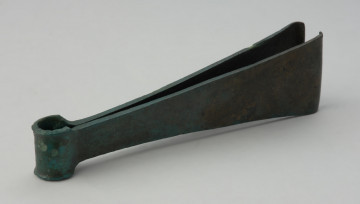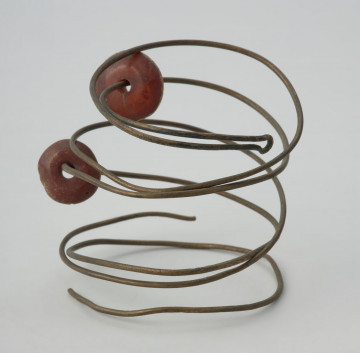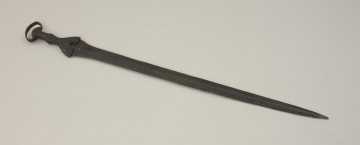
Tiny pliers
around 1100 p.n.e. — 900 p.n.e.
National Museum in Szczecin
Part of the collection: Bronze Age
The stone axe discovered in the town of Parsów at the end of the 19th century is characterized by its miniature size and a plug-like butt. It is associated with people of the Lusatian culture from the Late Bronze Age (ca. 1100-750 BC). At that time, judging by the number of finds, there was an increased interest in stone raw material for the production of, among others, axes, which are often discovered in graves, as burial furnishings and also individually, without context. The so-called grooved stones, with impressions and grooves on the surface, also appeared at that time, probably under the influence of interaction with the representatives of the culture of Nordic Bronze Age. Their purpose has not yet been explained. It is assumed that they may have been connected with bronze processing, as they are discovered together with moulds and casting crucibles e.g. in hoards.
Monika Witek
Author / creator
Dimensions
the entire object: height: 7 cm, width: 12 cm
Object type
tool, weapon
Material
stone
Origin / acquisition method
legal transfer
Creation time / dating
Creation / finding place
Owner
National Museum in Szczecin
Identification number
Location / status

around 1100 p.n.e. — 900 p.n.e.
National Museum in Szczecin

around 900 p.n.e. — 750 p.n.e.
National Museum in Szczecin

around 900 p.n.e. — 750 p.n.e.
National Museum in Szczecin
DISCOVER this TOPIC
Castle Museum in Łańcut
DISCOVER this PATH
Educational path